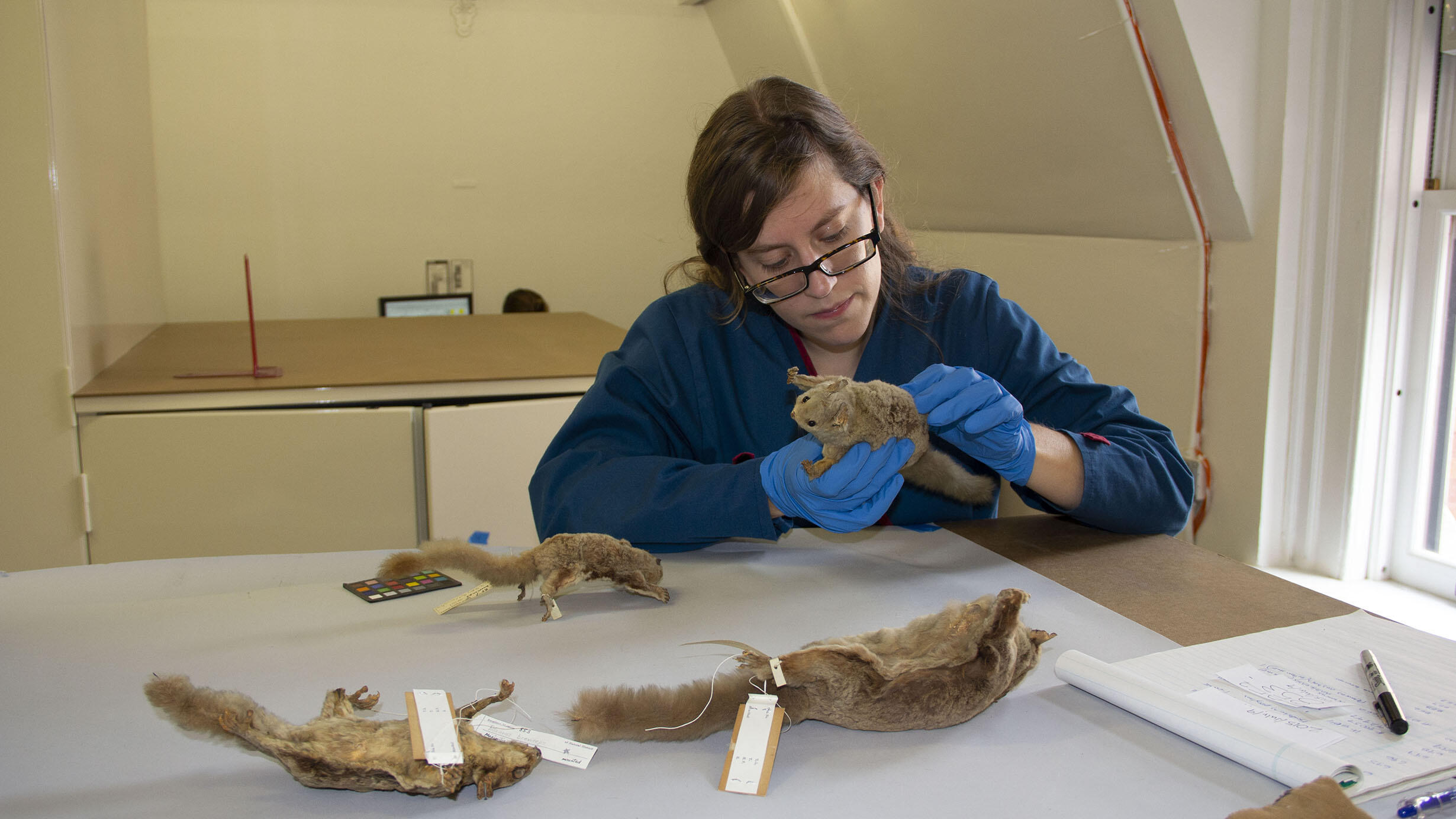
A condition report provides a detailed record of an object's condition, typically including a written description and photographic documentation of damage, deterioration, or alterations to that object. A condition report may also include information about the object's construction, it history of use or display, as well as previous treatments. The report serves as a baseline for treatment, helping the conservator to develop a treatment plan that is tailored to the specific nature of the object and its context of use. After a treatment is complete, the condition report is typically updated to reflect the steps taken and their outcomes, serving as a permanent record to guide future decision making and interpretation.
Reporting for Conservation Treatment
Professional conservation ethics obligates conservators to create detailed condition documentation any time that an object is treated. It is an essential requirement “to produce and maintain accurate, complete, and permanent records of examination, sampling, scientific investigation, and treatment.” (AIC Guidelines for Practice)
Reporting for Loans and Exhibition
Object documentation is required for exhibition or loan, including before and after travel. Reports prepared for this purpose identify and describe the object in detail, including its existing condition prior to travel and/or display. This documentation supports the continuity of object stewardship as a loan moves between different contexts over time, and protects the institution from insurance liability. A successful report will enable the examiner to interpret written and photo documentation to differentiate new condition changes from older damage or deterioration. Annotated photographs are a particularly successful method for conveying this information.
Essential Report Elements
The AMNH Science Conservation Lab follows the American Institute for Conservation Guidelines for Practice for reporting, adapting report formats to meet the needs of different departments and projects. Written reports can utilize both free form text and check boxes, and include the following essential elements:
- Identification of the artifact or specimen
- Purpose of the examination
- Date of Examination
- Name of Examiner
- Graphic Documentation (photographs, diagrams, and/or drawings)
Identification
The written record must include information that uniquely identifies the cultural property including:
- Unique identifying number(s)
- Owner/custodian
- Maker/Origin
- Subject/title/scientific classification
- Measurements
- Marks/labels
- Date of creation, if applicable
- Information/data obtained through direct observation and/or testing
- Notation of accessory materials or associated elements
Description
Condition documentation that meets the recommended standards of practice includes detailed descriptions of the composition/components/construction of the object, pertinent object history, its state of preservation, and the nature, location, and extent of any damage or instabilities. The report also incorporates or cites associated records (previous conservation documents, curatorial records, and in the case of objects loaned by an outside institution, the lender’s original condition report), which are retained in the object file.
Graphic Documentation
All condition documentation records includes graphic documentation (e.g. photographs, diagrams, drawings) that is necessary to accurately represent an object and its condition. Annotated images may be used to supplement written descriptions, when appropriate. Learn more about imaging requirements and techniques.
Additional Report Elements
In addition to the basic information outlined above, conservation treatment documentation also includes:
Treatment Proposal
Following examination and before treatment, the conservator prepares a plan describing the course of treatment. This plan includes the justification for and the objectives of treatment, alternative approaches if feasible, and the potential risks. When appropriate, this plan is submitted as a proposal to the custodian of the specimen so it can be discussed and agreed upon.
Treatment Record
During treatment, the conservator maintains dated documentation that includes a description of techniques or procedures involved, materials used and their composition, the nature and extent of alterations, and any additional information learned in treatment.
Recommendations
Recommendations for the future care of the specimen, e.g. best practices for handling or mounting, exhibit guidelines, and environmental needs.
Resources for Reporting
- The Museum Registration Methods edited by Rebecca A. Buck and Jean Allman Gilmore (American Association of Museums: Washington DC, 2010) and available from the AAM Bookstore contains useful information on documentation that can be adapted for natural science specimens.
- He Rauemi Resource Guide 26 Condition Reporting: Care of Collections and Taonga published in 2010 by Museum of New Zealand Te Papa Tongarewa guides non-specialists through the process of examining an object, identifying damage and reporting.